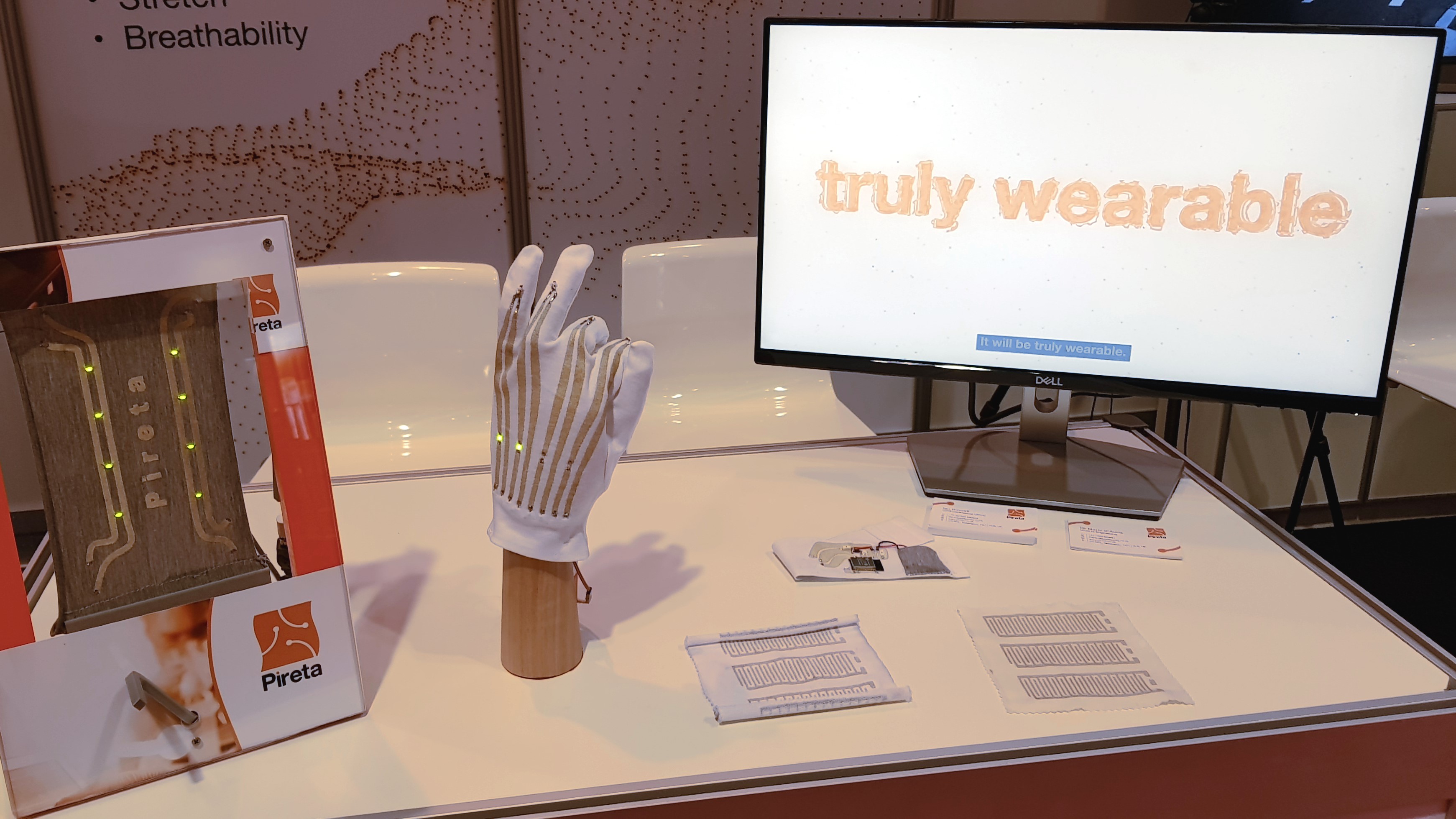CLOSE
About Elements
TANAKA is a leading company in the field of precious metals.
Advanced materials and solutions that support societal progress, the development stories behind them, the voices of engineers, and our management philosophy and vision—
Elements is an online media platform that shares insights that lead to a better society and a more prosperous future for the planet under the slogan “Mastering Precious Metals.”

Washable, breathable and stretchable – the next generation of smart fabrics

Until now, there have typically been two ways of making clothing conductive: either wrap fibers in fine metallic wire (or stitch it in), or apply adhesive circuits onto the surface. Both of these work reasonably well, and have been put to use by sportswear companies to create smart garments that monitor your activity and feed stats to your phone.
However, these augmented fabrics don’t behave quite like their ordinary counterparts. They can’t always be washed at high temperatures (a major drawback for healthcare, where clothes need to be deep-cleaned), they don’t stretch the same way (particularly if the circuits are printed onto the surface), and the handle and drape are different.
British startup Pireta has a solution: a new technique that involves coating each individual fiber with a layer of copper just 2nm thick. It can be done to pretty much any fabric (knitten, woven or non-woven; natural or synthetic) and had barely any effect on the way it flexes, stretches and bends like a normal fabric.
Coat every fiber
Pireta’s CTO and founder Chris Hunt came up with the idea while working at the National Physical Laboratory.
The process uses sintering, which involves applying heat and pressure to tiny particles of a material – in this case, silver nanoparticles – causing them to solidify. This happens at a much lower temperature than the metal would normally melt at, and once they are fused, they won’t change until the material reaches its melting point again.
“We activate a textile surface, then immerse it in silver nanoparticles in solution,” Hunt tells TechRadar. “They are bound by an electrostatic charge to the fibers. When we dry the garment, we end up with silver attached around every fiber. It’s not conductive yet at this point, but if we put them through a type of electroless reaction, the copper comes out of solution and you form a copper sheath around each fiber, around two microns thick.”
This process can happen at any stage in the manufacture of a garment, and has no effect on stretch or breathability. You can even solder components straight onto treated textiles.
“We can carry a 2.4GHz signal,” Hunt explains, “so if you made a piece of apparel for someone in the emergency services, you could put antennas in different places, so there would always be a line of sight between them and the base station they are talking to – unlike hand-held units that clip onto jackets.”
The biggest limitation of this smart garment tech comes down to what the fabric can’t take even if it were untreated. Pireta has experimented with various textiles and learned that when a manufacturer says to wash at 40C, they typically mean it.
“We’ve also done stretch tests,” says Hunt. “If you test to 20% extension and the fabric is happy with that, then our tech is happy.”
Healthcare, sports and beyond
Hunt sees many more possibilities for Pireta’s process, including healthcare, where a smart garment for an elderly person could detect sudden changes in heart rate, or a fall, without the need for them to strap on a smart watch. Smart garments could also be used in hospitals to detect pressure points and help prevent patients from developing bed sores.
There’s also treated fabrics applications in professional sports. “The athletes are very expensive, and teams want to get the most out of them,” says Hunt. “There are lots of sports wearables being used in events like the Tour de France, but they tend to be clunky and modular.”
A smart jersey and socks, for example, would be able to detect factors like speed, cadence and heart rate, and feed them back without the need for a separate chest strap and sensors.
The main limitation is the durability of the original textile
Garments using Pireta’s process aren’t yet available to buy, but Hunt and his team are in talks with several companies about using its process on a commercial scale. The details are under wraps for the time being, but he says it’s an exciting time.
“Many other companies are selling garments like shirts, but Pireta doesn’t really have any competitors in its field. That might be a good thing.”
© Future Publishing Limited Quay House, The Ambury, Bath BA1 1UA. All rights reserved Provided by SyndiGate Media Inc. (Syndigate.info).
This article was written by Cat Ellis from t-break Tech and was legally licensed through the NewsCred publisher network. Please direct all licensing questions to legal@newscred.com.
![]()







